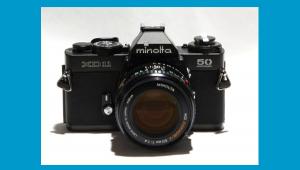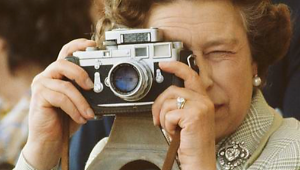Lexmark P6250 and P915 Photo Printers: Convenient, Versatile Printers For Printing Direct From Memory Cards Or PictBrige Enabled Cameras
 |
|
|
 |
|
|
Identical to the P6250 in most respects, the P915 printer lacks only the built-in
scanner/copier that's available only with the higher priced model. Note
the slots for seven types of memory cards and the PictBridge USB port (under
the clear blue panel) intended for printing without a computer. Photos: Courtesy
of Lexmark
Designed for the ease of use that some photographers demand, these models are
ideal for convenient printing from memory cards or from PictBridge enabled digicams.
A large color LCD monitor allows for image preview and menu navigation. The
machines can also print from a connected computer, of course, using "smart"
software with print enhancing features.
After making many prints with the P915 I decided to test the P6250 more extensively.
In this review, I'll discuss the latter but my comments -- except those
relating to the scanner -- apply equally to the P915 Home Photo Printer.
Features and Technology
An attractive, well-built, white and blue machine, the P6250 sports slots for
memory cards and a USB port for connecting any brand of camera that incorporates
the PictBridge technology. In addition to the 2.5" LCD monitor, there
are buttons for user-selectable features for printing and scanning. A lid covers
the flatbed scanner, which can also be used as a standalone photocopier with
a convenient enlarge/reduce feature (25% to 400%). The correct placement of
documents is simplified by an illuminated area; simply position the top left
corner of your document on that part of the glass plate for proper orientation.
Whether used for direct printing or connected to a computer, the P6250 can generate
color output with resolution up to 4800x1200dpi. That level is available only
with glossy media and only in the highest (Photo) quality mode. When matte paper
is used, maximum print resolution is 1200x1200dpi, plenty for such media, in
my experience.
Two cartridges are required for photo printing. The first, designated as #35
Color, is loaded with cyan, magenta and yellow dye based inks. The second, #31
Photo, includes light cyan, light magenta and photo black pigmented inks. (For
four color document printing, replace the photo cartridge with a #32 Black for
greater economy.) Note too that every cartridge incorporates a print head; whenever
you buy a new one, you get a new print head too, great for long-term reliability.
Called a "hybrid system" because of the two types of inks, the combination
is labeled as Evercolor because it's extremely fade resistant but capable
of producing vibrant hues and tones. Pigments are quite different than dyes.
They're ideal for print permanence but cannot reproduce the full range
of colors possible with dyes and are not as suitable for glossy prints. Also,
pigment molecules are larger so they're ejected in larger droplets. The
P-series printers generate photos using 9 picoliter size pigments plus smaller
2 and 5 picoliter dye droplets. The combination was designed to produce a print
that appears continuous in tone like a conventional photograph with a wide color
gamut, high overall gloss and great fade resistance.
According to tests conducted by Wilhelm Imaging Research, prints made on the
new Fuji inkjet photo paper should last up to 65 years on display before noticeable
fading occurs. In dark storage, or in an archival album, the prints should look
great for up to 200 years. Those are impressive estimates, achieved with a combination
of Evercolor inks and special swellable polymer papers co-developed by Lexmark
and Fuji. The prints are tacky at first and take about 24 hours to dry fully.
While it may be tempting to use "instant dry" papers, you won't
get optimal results with that type of (micro porous) media.
 |
 |
|
|
||
Printer and Scanner Operation
Set up and installation is straight-forward, using the quick start guide that's
provided. The built-in card reader is a bit slow to read all of the JPEG's
if the memory card includes numerous photos, especially high resolution images.
In this respect, the Lexmark printers are about average.
Making a print direct from a card or a PictBridge enabled camera is not complicated
but it does call for pressing a few buttons. The process is well explained in
the instructions. Using the front-mounted controls and the LCD screen, make
your selections as to desired photos, the paper size, any cropping, print quality
and number of copies. Before instructing the machine to make the print, it's
worth checking the image on the LCD screen to evaluate how the final output
will look. Although automatic print enhancement is provided, you can also make
brightness adjustments for the best results.
The LCD screen also reports printer status and ink levels. When you open the
lid to access the cartridges, a video appears on the screen with helpful instructions
on this process. Buttons also allow you to switch from printing to the Copy
or Scan function.
When connected to a computer for conventional photo printing, the P6250 employs
Lexmark's Imaging Studio software that automatically adjusts exposure,
sharpness, color balance and skin tone rendition. Automatic media type detection
is available with automatic setting of the optimal print quality mode for each
paper type. Manual selections for media type, print quality and sharpening level
can be made, but no other user-selectable overrides are provided.
When you want to make a scan, the All-In-One Center software is launched with
suggestions for resolution depending on the end-use of the image. An advanced
screen is available too for increasing resolution, sharpening or noise reduction.
As a scanner, the P6250 generates good but not great image quality from photographs.
This feature will be most appreciated by families who often want to digitize
or copy documents and photos for school projects. For such purposes, the double
sided printing feature will also be beneficial.
 |
|
|
Printer Evaluation
In 4x6" print making, the Lexmark P6250 and P915 are quite competitive
in speed with others in their price range. I was able to make a 4x6" print
in the highest quality Photo mode in about 45 seconds. A high resolution borderless
8.5x11" glossy print took about 4.5 minutes. That's slower than
average. Performance is faster in the lower quality modes but the superior image
quality in Photo mode is well worth the extra wait.
In direct printing, the automatic enhancing features were often useful, especially
for underexposed JPEG images. When printing from images optimized in Photoshop,
I found that some of the outputs were beautiful. The best prints exhibit detail
in both highlight and shadow areas, good color saturation, brightness and contrast,
a slight magenta cast, pleasing pink skin tones and high resolution of intricate
details.
Other prints were less than ideal: excessively bright overall, with a stronger
magenta cast and flesh tones that seemed too ruddy. Because there is no option
for disabling automatic enhancement in the Studio software, I could not make
a print that closely resembled the perfect image displayed on my color calibrated
ViewSonic Professional monitor. After adjusting Color Balance (toward green)
and Levels (toward darker shadows and mid-tones) in Photoshop, I was able to
make better prints on a second attempt. Hopefully, Lexmark will update the driver
software in future, adding a simple "Enhancing Features Off" control
or user-selectable brightness/color adjustment sliders. That would probably
solve most of the problems that I encountered when printing images from my computer.
 |
|
|
Conclusion
Shop around and you should be able to find the P6250 Photo Center for around
$169, a bargain for a versatile scanner/copier/photo printer. Some retailers
sell the P915 Home Photo Printer (identical but omitting the scanner) for about
$129 also good value for a machine with direct printing features. The P915 is
also one of the lowest priced printers that can make truly archival photo prints.
According to Lexmark's information and marketing, it is clear that the
P-series products are intended to appeal to moms, children and teens in both
styling, features and automation. Neither machine targets the advanced digital
photo enthusiast who wants maximum control plus fast performance in 8.5x11"
printing. In my estimation, the P6250 or P915 is most likely to satisfy families
who usually make 4x6" prints direct from a camera or a memory card. That's
when these photo printers really shine with highly acceptable speed and useful
image enhancing technology.
A long-time EDP and Shutterbug contributor, stock photographer Peter K. Burian
is the author of Mastering Digital Photography and Imaging. This 270 page book
covers all aspects of the topic and provides a great deal of practical advice.
Pros:
· Impressive print permanence (great resistance to light, humidity and
ozone)
· Great versatility in direct printing from a memory card or PictBridge
enabled camera ; P6250 is very versatile in scanning/copying
· Large color LCD monitor for image preview and menu navigation
· Automatic image enhancing features are useful in direct printing; user
adjustable Brightness control is also valuable
Cons:
· Slow in making 8.5x11" prints
· Quality of scans from photographs is fine for some purposes but not
excellent
· Brightness and color balance, especially in skin tones, is sometimes
very good but occasionally poor
· No controls in driver software for disabling automatic enhancement when
it does not produce the desired effects
FACTS
Printing Technology: Thermal inkjet printer; 2 to 9 picoliter
droplets; print head integrated into disposable cartridges
Scanner, P6250 only: Contact Image Sensor (CIS) flatbed with
1200x2400dpi optical resolution; up to 4800dpi enhanced resolution; 48 bit internal
True Color; 24 bit external True Color; maximum scan area 10x15"; reduce/enlarge
option in standalone copying mode
Ink: For photo printing, Evercolor ink set, in two cartridges
(Color and Photo); dye-based cyan, light cyan, magenta plus pigmented light
magenta, yellow and photo black
Maximum Resolution: Up to 4800x1200dpi for color, on glossy
paper; up to 2400x1200 dpi for black and white
Estimated Print Longevity: Up to 65 years rating when displayed
under glass, if made on swellable (not micro porous) matte or glossy media
Connectivity: USB 2.0
Software Included: Lexmark Image Studio and Photo Editor
Other Features: 2.5" color LCD monitor; direct printing
from seven types of memory cards or PictBridge enabled cameras; Exif Print and
DPOF compliant
Compatibility: Windows 98, ME, 2000 or XP; Mac OS X 10
Dimensions/Weight: P6250: 17.1 x 13.1 x 7 in., 10.6 lbs. P195:
5.9 x 16.9 x 9.3 in., 6.4 lbs.
Street Price: P6250, $169. P195: $129.
- Log in or register to post comments

















































